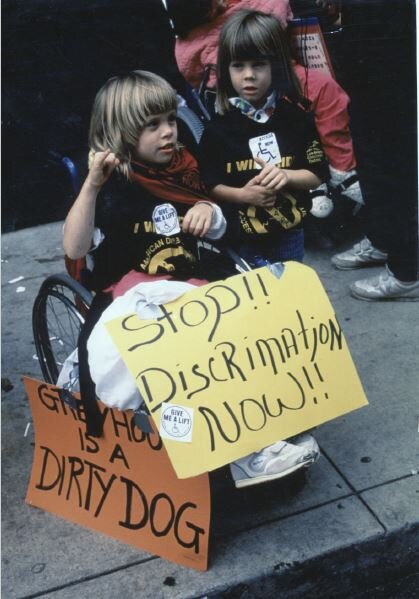Annette Bay Pimentel loves to write about people who are still alive — that gives her the chance to talk with the and include first-hand stories and words in her books. For All the Way to the Top (illustrated by Nabi H. Ali; Sourcebooks), she interviewed Jennifer Keelan-Chaffins multiple times about what it was like growing up in a wheelchair and what gave her the courage and determination to fight for the passage of the Americans with Disabilities Act, which mandated equal access for people with physical challenges. She interviewed Bobbi Gibb for Girl Running (illustrated by Micha Archer,;Nancy Paulsen).
Annette’s books have won many awards. Girl Running was a 2018 Junior Library Guild Selection, NCSS Notable Social Studies Trade Book, 2019 Golden Kite Honor, LDSPMA 2019 Praiseworthy Award, Texas Topaz Nonfiction Title, Maine Chickadee Award nominee, Vermont Red Clover Book Award nominee and a Maryland Black-eyed Susan Award nominee. Her Mountain Chef: How One Man Lost His Groceries, Changed His Plans, and Helped Cook up the National Park Service (illustrated by Rich Lo; Charlesbridge) won the Carter G. Woodson Award from the National Council of Social Studies, was a Sigurd F. Olson Nature Writing Notable Children’s Book and 2016 Eureka! Honor Book from California Reading Association. Annette lives in Moscow, Idaho. One more fun fact: she’s the fifth child of a fifth child of a fifth child; she married a fifth child and she has 5 + 1 children. Welcome, Annette, to The Kids Are All Write!
Annette Bay Pimental
How and when did you learn about Jennifer Keelan-Chaffins? What inspired you to write her story?
Of all the laws that have passed in my adulthood, I believe the Americans with Disabilities Act (ADA) has had perhaps the most pervasive impact on our culture. It brought not only sidewalk curb cuts and Braille elevator panels but also much deeper changes. My elementary school certainly didn’t accommodate children with disabilities, but my children attended school with kids with all sorts of disabilities.
A book about a law sounded dry, but I knew lots of people had worked to get the ADA passed. And stories about people are never dry! I considered writing about several different activists, but when I stumbled across Jennifer’s name and read her story, I knew my search was over. I could write about the ADA from a child’s perspective and show what a difference a single child can make.
Jennifer Keelan-Chaffins
Jennifer wrote a moving foreword to your book. How did that come about? How involved was she in the development of All the Way to the Top?
While I knew I wanted to write Jennifer’s story, I also realized I needed her voice to be part of that story. After some false starts, I managed to contact her online. She graciously welcomed me, a stranger, into her life. I interviewed Jennifer and her mom several times and came back to them repeatedly with questions. They dug out their old photos and mementoes. And they did all this while Jennifer was working on her final college courses!
One reason I wanted to publish with Sourcebooks is that they were, from the beginning, enthusiastic about having Jennifer write part of the text for the book. She worked separately with our editor, Kate Prosswimmer, on the foreword.
And then, just when the text was done, Jennifer faced an entirely new set of questions from our artist, Nabi Ali.
I have loved being able to work so closely with the subject of my book. All those niggling details I’m dying to know? I can just ask!
Jennifer Keelan-Chaffins
Did you have the title from the start? Was there an aha! moment when it came to you?
Ha! When the manuscript was finished and I needed to finally settle on a title, I spent days brainstorming. I have eight pages of possible titles.
I eventually settled on All the Way to the Top because it literally describes what happened—Jennifer climbed all the way to the top of the steps at the US Capitol—but it also figuratively describes what she was trying to make possible for children and adults with disabilities.
While I was working on the book with Jennifer, artist Gina Klawitter, did a sculpture of Jennifer. Neither of us conferred with the other on titles—we hadn’t even met yet—but Gina titled her sculpture All the Way to Freedom.
All the Way to Freedom is a sculpture by Denver artist Gina Klawitter formed directly from the posed body of Jennifer Keelan-Chaffins.
What was your biggest challenge in writing the story?
I struggled with the story arc. Jennifer participated in soooo many demonstrations and protests as a child! One of my favorite was a cafeteria sit-in that she and her sister led in their elementary school (and got suspended for!), to protest kids with disabilities being barred from eating lunch with everyone else. I wanted to include all the great stories Jennifer told me, but ultimately a picture book needs to be tight and focused.
Jennifer Keelan-Chaffins
What was your greatest satisfaction?
I loved working with Jennifer. I loved interviewing her. She believes passionately in what kids can do. I feel honored to be the one to translate that passion and her story into text.
My favorite part of the manuscript to work on was the part that tells about Jennifer’s actual climb. I kept putting off that section of the manuscript because I felt intimidated, knowing it would be important to the book. But once I forced myself to get it down on paper, it was easy. I’d heard Jennifer tell the story enough that I felt like I was there, recording what I was seeing and hearing. That section of the story never did change much in the editing process.
Can you share the journey from idea to acquisition? How long did it take? How much did it change?
I contacted Jennifer in May of 2017. We received an offer from Sourcebooks in April of 2018. The story arc was in place by then, but my editor and I worked on the way kids’ understanding was scaffolded and on the refrains and repeated words in the book.
Nabi Ali illustrated ‘All the Way to the Top,’ by Annette Bay Pimental (Sourcebooks)
What did you think of the illustrations by Nabi Ali when you first saw them? Do you have a favorite spread?
I’m always surprised when I see illustrations for the first time! I was very excited to see how he had used reference photos to create entirely new images that still captured the spirit of the original photos. I especially love the spreads that show Jennifer at public protests. He manages to convey the feeling of a crowd but still keep our focus on Jennifer.
I love the repetitive use of the word GO in your book. Is that there as a reminder of how unstoppable Jennifer Keelan-Chaffins and others who have physical challenges are?
Jennifer is, of course, indomitable. But she has spent many years being stopped by physical barriers. People with other types of disabilities also get stopped by attitudes and by organizational structures that don’t take disability into account. I hope the refrain of “GO” pays tribute to Jennifer in particular but also reminds my readers that they have a role in pushing for a world where people don’t get stopped simply because they have a disability.
Jennifer Keelan-Chaffins at Mobility of Denver
This is as much a story about the American Disabilities Act as it about Jennifer Keelan-Chaffins, evidenced not only in the book itself, but the double timeline, one for the ADA and one for Jennifer Keelan-Chaffins. How challenging was it to interweave these stories into one in a story manageable and accessible for young readers?
One of the challenges of writing nonfiction for children is giving kids enough background to understand the story I have to tell. It makes me happy that I had to work so hard to try to explain how kids with disabilities were sidelined and ignored at the time of this story.
Your back matter is very thorough. What went into preparing and writing that?
I love back matter in nonfiction picture books and always end up with way more than I can use. My editor encouraged me to edit my back matter to make it very kid-friendly, rather than having it be a gloss on the text for adults.
What do you hope kids and their adults will take away from All the Way to the Top?
I hope they will know that kids can—and do—change our world.
Like many of us authors, you released your wonderful book in a year we had a pandemic that prevented you from presenting it in person in as many places as you might have liked. How do you feel about that challenge? How have you handled it and what is the best way for folks to help get the word out?
Jennifer has been very involved with me in promotion. The week the book came out, we had four wonderful days doing school visits and public events together. Then governors began issuing shelter-in-place orders. We’ve had a few events moved online and many more postponed.
We are participating in the Everywhere Book Festival https://everywherebookfest.com/festival-info/schedule/#day2sched and would love to have you join us there. Our book is still available wherever you buy books, and it’s always helpful when readers tell friends about All the Way to the Top either by word-of-mouth or by review on book sites.
Plus, Laurie Wallmark and I are doing a free online book party on May 15 with The Writing Barn and Book People of Austin. You can sign up by clicking here.
Is there anything you would like to add?
July 26 is the 30th anniversary of the ADA. The events that were originally planned to commemorate it are up-in-the-air now, but Jennifer and I are hoping to celebrate the way it has transformed our world. We hope others will look for ways to celebrate the ADA, too, and all the ways it has invited people to participate in our society.
Thanks, Annette, for sharing your story on THE KIDS ARE ALL WRITE! You can visit Annette on social media.
On her website: annettebaypimental.com
On Facebook: Annette Bay Pimental
On Twitter: @AnnettePimental
On Instagram: @annettebaypimental
Learn more about Jennifer Keelan-Chaffins on her website at jkclegacy.com. From the Sourcebooks page: Jennifer joined the disability rights movement at the age of six and has been a passionate advocate ever since. In 1990, she received the Americans With Disabilities Act Award. Jennifer received her GED in 2002 before earning a B.S. in Family and Human Development from Arizona State University, which she plans to use to help children with disability rights advocacy. She lives in Colorado with her mother, Cynthia Keelan, and her service dog Mya.
Girl Running by Annette Bay Pimental, illustrated by Micha Archer (Nancy Paulsen Press)
Mountain Chef by Annette Bay Pimental, illustrated by Rich Lo (Charlesbridge)











